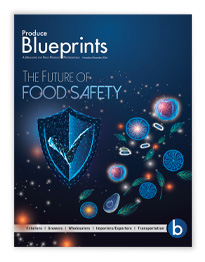Restaurant operators globally have returned to menu innovation, according to Technomic, with the average chain worldwide introducing 19 new or limited-time offerings in 2023, more than in 2021 or 2022.
When it comes to flavors, “Broader trends within the food space are influencing produce trends, particularly consumers’ growing love of global flavors and spice,” says Samantha Des Jardins, content marketing manager for Datassential.
“We’re seeing some new-to-many peppers like the Peruvian aji amarillo—which has a pleasing fruity taste, in addition to heat—emerge on the scene as consumers explore more in the realm of spice,” she says.
She also mentions there are “evolutions in produce staples like kale with lacinato [a kale variety used in Tuscan cuisine], which offers an option for consumers flocking to dark, leafy greens, and more fanciful options like squash blossoms.”
The Specialty Food Association, based in New York, NY, cites Calabrian chile peppers among its food and beverage trends for 2024, as consumers continue to look for spicy peppers other than the most common flavors such as sriracha.
Other plant-based ingredients expected to trend, according to the association, include peaches in condiments and baked goods; tahini in milk shakes, baked goods, and coffees; ube (purple yam) in beverages like tea and hot chocolate, as well as in desserts; and continued strength for mushrooms in just about anything for their taste, texture, and health benefits.
Another Specialty Food Association trend that offers an opportunity for produce marketers is the rise of soup, driven by a TikTok trend called SoupTok. Comforting, nostalgic foods remain a hot trend as well.
Another opportunity for both conventional and specialty produce is at the bar.
Jill Overdorf, longtime marketing guru and founder of The Produce Ambassador in Torrance, CA, notes that bartending has become an art form where patrons will pay as much as $18 for a drink, especially in the nonalcoholic specialty drink category.
Fruity, healthy beverage mixes, like blending passion fruit with other ingredients and adding newly developed bar garnishes, such as air-dried blood orange, are gaining popularity across the country.
“It’s not a little umbrella or a maraschino cherry with red dye number two,” she says. “It’s an external element that reflects what’s in the drink.”
This is an excerpt from the feature story of the July-August issue of Produce Blueprints Magazine. To read the whole issue, click here.



